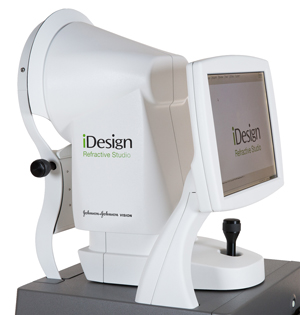How the Webb Telescope and a LASIK Surgery System Benefitted from a Collaboration Between NASA and Johnson & Johnson Vision
The overlap between space telescope optics and ophthalmic optics is most evident in the specialized technology used by both NASA and Johnson & Johnson Vision. The two science-focused organizations found an area of synergy, using the same innovative wavefront measurement technology for two different purposes.
Shack-Hartmann WaveFront Sensor, which measures wavefront aberrations in materials such as silicone wafer, contact lenses, IOL’s, and the eye, already existed within Johnson & Johnson Vision. In partnership with NASA, this same technology was applied to measure the polished surface of the mirrors on the James Webb Space Telescope.
| 
|
| Johnson & Johnson Vision’s iDESIGN Refractive Studio allows doctors to perform custom surgery.
|
|
|
Through this experience with NASA, Johnson & Johnson Vision accelerated the development, accuracy, speed and production of their proprietary iDESIGN Refractive Studio. iDESIGN is used to create a high-definition map of a patient’s eye to help guide a surgeon performing LASIK eye surgery to improve a patient’s outcome.
Johnson & Johnson Vision’s involvement with NASA began in 2017, after it acquired a company that had originally been spun off from the space agency in the mid-2000s. “NASA came to us with a problem,” explained Kristian Santana, principal electrical engineer, Johnson & Johnson Vision. “They needed the most precise measurement of these very important and amazing mirrors. We used our technology to try and solve that problem.”
NASA provided Johnson & Johnson Vision with resources that enabled the company to buy better cameras and computers, which it used to develop faster algorithms for real-time data processing and new optical path systems. The research not only helped NASA, but ultimately led to more accurate mapping for ophthalmic surgeons who were doing LASIK surgery, according to Santana.
“We have a much higher precision image, algorithm and data that our competitors, which allows doctors to perform surgery in which the outcomes are much better and are highly customized to each eye,” he added.
|